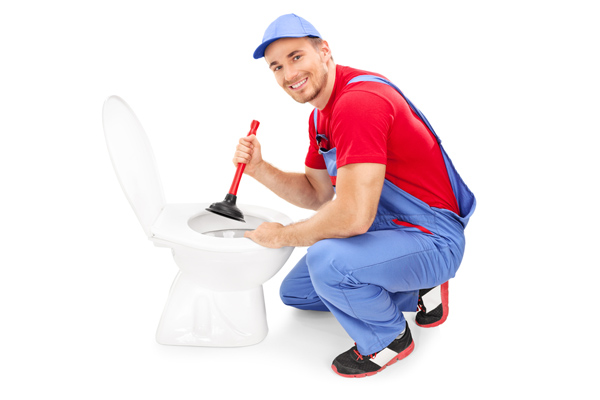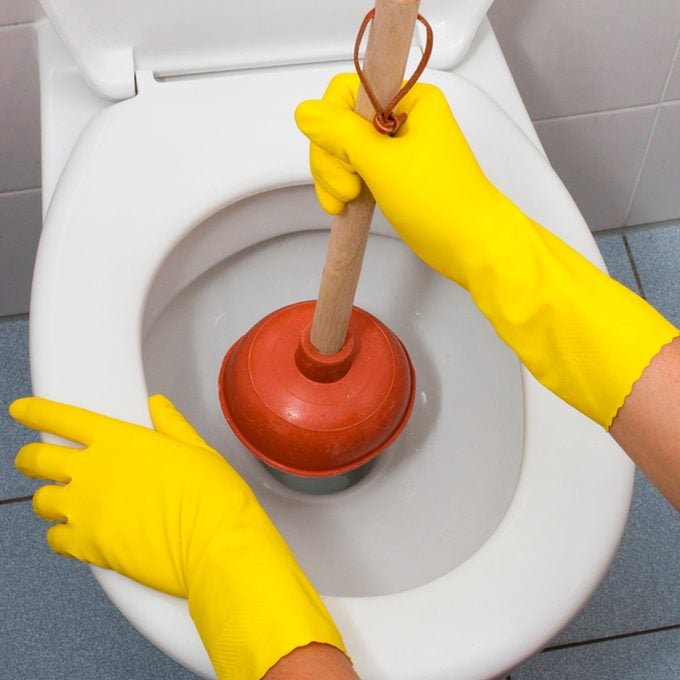Everybody maintains their own individual piece of advice about How To Use Your Toilet Plunger Correctly in 5 Easy Steps.

Introduction
Correct maintenance of house drains is essential for stopping clogs and making sure smooth water circulation. One of the trick tools in every house owner's toolkit is the bettor, alongside different drainpipe cleaners developed to take on stubborn blockages properly. This short article discovers just how to use plungers and drainpipe cleansers successfully to maintain your drains streaming easily.
Area 1: Understanding Bettors
Kinds of Plungers
There are several types of bettors offered, each created for different types of drains and obstructs. The most common kinds include cup plungers, flange plungers, and accordion bettors.
Just How Plungers Job
Bettors work with the principle of creating pressure and suction to dislodge obstructions. When appropriately applied over a drain, they create a vacuum cleaner that can pull out debris or separate blockages.
Selecting the Right Bettor
Selecting the right plunger relies on the type of drain and the nature of the obstruction. Cup bettors are perfect for sinks and bathtubs, while flange bettors are better fit for commodes due to their style.
Usual Mistakes with Plungers
Staying clear of these blunders guarantees reliable plunging: inappropriate seal around the drain, insufficient force, and not clearing surrounding debris.
Section 2: Utilizing Plungers Properly
Prep work
Prior to diving, make certain the bettor covers the drainpipe totally and creates a tight seal. Clear any kind of visible debris around the drain opening.
Technique
Begin with gentle plunging movements to develop suction. Boost stress slowly, utilizing a consistent rhythm. Repeat as essential till the drainpipe removes.
Fixing Tips
If plunging doesn't work, try readjusting the seal, using oil jelly for a much better seal, or using a different sort of bettor.
Section 3: Understanding Drainpipe Cleansers
Kinds Of Drain Cleaning Company
Drain cleaners can be chemical or chemical. Chemical cleansers make use of solid chemicals to dissolve obstructions, while enzymatic cleaners make use of natural enzymes to break down organic matter.
Just How Drain Cleansers Job
Chemical cleaners react with blockages to liquify them, while chemical cleaners break down organic materials like hair and grease without hurting pipelines.
Safety and security Factors to consider
Constantly wear gloves and eye protection when using chemical drain cleaners. Guarantee appropriate air flow and comply with maker directions very carefully.
Eco-Friendly Alternatives
Take into consideration making use of vinegar and cooking soda or enzyme-based cleaners for environment-friendly alternatives that are safer for pipes and the environment.
Section 4: Utilizing Drain Cleansers Successfully
Application Strategies
Put chemical cleansers straight into the drain opening. Allow them to work for the recommended time before purging with warm water. Chemical cleansers ought to sit overnight.
Preventative measures
Stay clear of blending different types of cleansers, as this can create harmful fumes. Never make use of chemical cleansers together with a plunger, as spilling can happen.
Dealing With Persistent Blockages
For persistent obstructions, think about using a plumbing serpent or calling a specialist plumbing technician to avoid damages to pipes.
Conclusion
Finally, comprehending just how to use bettors and drain cleaners properly is necessary for maintaining healthy pipes systems. By picking the right tools and methods, home owners can tackle minor clogs and avoid significant pipes concerns down the line.
How To Properly Use A Plumbing Snake To Clear Drains
When any drain clogs in our home arise, we tend to gravitate toward the plunger and little else. In cases where the plunger and its vacuum-created pressure are not able to clear clogs, many immediately move to harmful chemicals or simply call their plumber to fix the issue.
we’re happy to help with all drain cleaning needs and concerns. This includes informing you on a few other home remedies you may have at your disposal for minor to moderate clogs, one of which is the use of a plumbing snake. Many people have never used one of these before – let’s go over the steps to take when your drain clogs and you have a plumbing snake available.
Attempt Plunger Use
The first step here, as we noted above, should indeed be to grab your plunger when you notice a drain clog and attempt to resolve it this way. If you’re unsure how to use a particular type of plunger, our plumbers can answer any questions you have. If this doesn’t do the trick, however, you move on to the snake.
Locate And Prepare Snake
A plumbing snake is a metal or plastic device that’s generally about a quarter of an inch thick. It’s design with significant extensions, meant to reach down into your clogged drain and push the clog out. Snakes also contain drain augers that will latch onto and push stubborn blockages.
If your plunger doesn’t clear a clog, locate your snake and bring it to the drain in question. We also recommend keeping a bucket nearby to collect the clog once you pull it out, plus we’d advise wearing goggles and possibly protective gloves.
Feed Snake
Once you’re ready to go, feed the snake slowly down the drain, using the crank device it comes with to keep it moving until it finds the clog. Once this happens, much of the clog will be latched onto the coil so you can pull it out, while the rest will simply break up and flow downward.
Detach Debris
Remove the snake slowly from the drain, and once you’ve done so, pick off any debris that’s stuck to the coil. This is another area where wearing gloves is a must.
Flush Drain
Finally, take a few minutes to ensure the snake has done its job correctly. If you’ve been using it on a toilet, flush the toilet a couple times and make sure everything flows well. If you’ve used it on a different drain, flush it with some room temperature water.
https://www.mybuddytheplumber.com/blog/how-to-properly-use-a-plumbing-snake-to-clear-drains/

Application Strategies
Put chemical cleansers straight into the drain opening. Allow them to work for the recommended time before purging with warm water. Chemical cleansers ought to sit overnight.
Preventative measures
Stay clear of blending different types of cleansers, as this can create harmful fumes. Never make use of chemical cleansers together with a plunger, as spilling can happen.
Dealing With Persistent Blockages
For persistent obstructions, think about using a plumbing serpent or calling a specialist plumbing technician to avoid damages to pipes.
Conclusion
Finally, comprehending just how to use bettors and drain cleaners properly is necessary for maintaining healthy pipes systems. By picking the right tools and methods, home owners can tackle minor clogs and avoid significant pipes concerns down the line.
How To Properly Use A Plumbing Snake To Clear Drains
When any drain clogs in our home arise, we tend to gravitate toward the plunger and little else. In cases where the plunger and its vacuum-created pressure are not able to clear clogs, many immediately move to harmful chemicals or simply call their plumber to fix the issue.
we’re happy to help with all drain cleaning needs and concerns. This includes informing you on a few other home remedies you may have at your disposal for minor to moderate clogs, one of which is the use of a plumbing snake. Many people have never used one of these before – let’s go over the steps to take when your drain clogs and you have a plumbing snake available.
Attempt Plunger Use
The first step here, as we noted above, should indeed be to grab your plunger when you notice a drain clog and attempt to resolve it this way. If you’re unsure how to use a particular type of plunger, our plumbers can answer any questions you have. If this doesn’t do the trick, however, you move on to the snake.
Locate And Prepare Snake
A plumbing snake is a metal or plastic device that’s generally about a quarter of an inch thick. It’s design with significant extensions, meant to reach down into your clogged drain and push the clog out. Snakes also contain drain augers that will latch onto and push stubborn blockages.
If your plunger doesn’t clear a clog, locate your snake and bring it to the drain in question. We also recommend keeping a bucket nearby to collect the clog once you pull it out, plus we’d advise wearing goggles and possibly protective gloves.
Feed Snake
Once you’re ready to go, feed the snake slowly down the drain, using the crank device it comes with to keep it moving until it finds the clog. Once this happens, much of the clog will be latched onto the coil so you can pull it out, while the rest will simply break up and flow downward.
Detach Debris
Remove the snake slowly from the drain, and once you’ve done so, pick off any debris that’s stuck to the coil. This is another area where wearing gloves is a must.
Flush Drain
Finally, take a few minutes to ensure the snake has done its job correctly. If you’ve been using it on a toilet, flush the toilet a couple times and make sure everything flows well. If you’ve used it on a different drain, flush it with some room temperature water.
https://www.mybuddytheplumber.com/blog/how-to-properly-use-a-plumbing-snake-to-clear-drains/

We were shown that article about A Guide to Plungers (and How to Use Them) through an acquaintance on another website. Those who liked our blog post if you please don't forget to share it. Many thanks for taking the time to read it.
Get Started